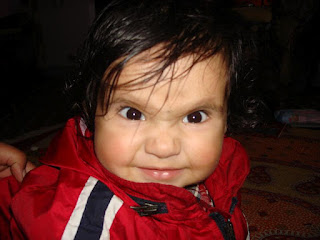Relation with Neighbors
 |
| Nepali in Indian Gorkha rifles (Source: Wikipedia) |
- There are several border encroachments (about 60 points like Susta in Nawalparasi) and army camp in Kalapani area since 1962. There is no fixed boundary between India and Nepal. There is no border dispute between China and Nepal.
- India deceived Nepal in Koshi and Gandaki river project. It controlled the dams in Nepalese territory and released excess water in rainy season while took away more water in dry season for the irrigation in India. These are the visible pains to Nepal.
- It does not help as expected in Nepali development in one sectors while obstruct other foreign helps in the fear that it will lose influence. Even such help is short nearsightedness with immediate return calculation.
- It is preparing fake Lumbini in India to fool whole world that Buddha was born in India not in Nepal.
- As there is free open border between India and Nepal many criminals can mis-utilize this.India accuses Nepal of harboring terrorists. When Nepal asked to regulate border or make fence or use passport system it systematically refuses it. This is because Nepal, though small to India, has also lot of opportunities. India wants its people to get benefits from Nepalese employment opportunities. In long run these people want to settle in Nepal and when succeeds ask citizenship and finally all political benefits. Even there is conspiracy theory that in longer run through this population dynamics India wants to annex Nepal into India.
- Nepal has no access to sea and nearest port is Kolkata in India.There is international understanding that there must be easy access to sea to all landlocked countries. But in 1988 about 18 months blockade was carried out by India. Reason was simple. Nepal bought some necessary weapons from China.
- Recently Prof S.D Muni, who has good connection with Indian government, has exposed the deceiving role India has played by supporting the armed conflict in Nepal since 2002 by sheltering the top brass of Maoist leaders like Baburam Bhattarai and Prachanda. He is also the mentor of Baburam Bhattarai while he was student in Jawaharlal University, India. India provided arms and training to them in one hand through its intelligence unit RAW and IB while on the other hand gave ammunition to Nepal army thereby flaring the conflict. It was surprising act to support the group she labelled terrorist officially. More than 15,000 people were killed during this decade long conflict (1996-2006). The country was pushed back for several decades and hard earned infrastructures were demolished and destroyed. Book entitled “Nepal in Transition: From People’s War to Fragile Peace", has shown the dubious and heinous role India has played toward friendly neighbor Nepal. Nepalese people are still working in Indian armed forces including Gurkha battalions saving her frontiers while India was unleashing terror in Nepal. What a surprising gift India offered Nepal for loyal service. It is irony of Nepal that both Baburam Bhattarai and Prachanda have become prime ministers of Nepal. Many in Nepal viewed removal of monarchy from Nepal was evil design of India with corrupt Nepali politicians. Monarchy was bastion for the integrity and national sovereignty and removal of it was easy way to meddle in the all lives of Nepali society. It is to be noted that annexation of Sikkim in 1975 was done after the removal of King by Indian grand design. It is written very nicely by Sukunda Dutta Roy in his book Smash and Grab, Annexation of Sikkim. The book is banned in India. Many people in Nepal have experienced the excess of Indian interference after the downfall of monarchy and rise of Maoist in power. It is to be noted that there was no plebiscite for the declaration of republic or making Nepal federal or secular country.
 |
| Exposed Indian hegemony |
Next blogs will talk about the role India has to play for the concept of TOGETHER WE PROSPER. We will discuss how Indian people can come hand in hand in this noble cause.




















